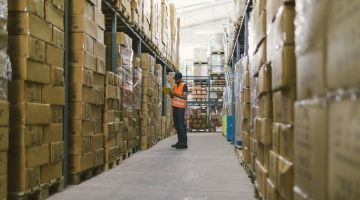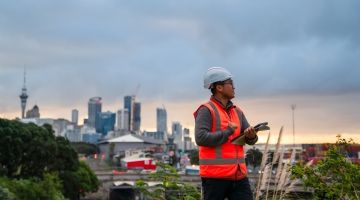Illness/injury prevention
IWH has a long history of conducting research to provide practical guidance to employers, workers, OHS professionals and regulators about what works and what doesn’t in injury or illness prevention. This research targets the injury and illness prevention practices of workplaces, as well as the programs developed by governments, health and safety associations and others to support and motivate workplaces to adopt effective practices.
Featured

At Work article
Differences in firm-level AI use for health and safety
To what extent are Canadian workplaces using artificial intelligence (AI) to help support workers’ health and safety? And what do these workplaces have in common? An IWH study surveyed firms across Ontario and British Columbia to find out.
Published: October 8, 2025

Impact case study
Saskatchewan’s construction safety group uses IWH tool to improve safety culture
This case study details how the Saskatchewan Construction Safety Association (SCSA) members have been analyzing IWH-OPM scores to adjust their safety practices and how SCSA has been using the data to tailor their outreach.
Published: February 10, 2025

At Work article
Higher risk of work injuries found among those in precarious jobs: IWH study
Workers in jobs where precarious employment conditions are more common are more likely to experience a work-related injury or illness in Ontario, including COVID-19. That’s according to a pair of studies authored by Institute for Work & Health (IWH) researchers that examined whether employment conditions—for example, temporary contracts, involuntary part-time hours, irregular schedules and low wages—may be linked to the rate of work injuries.
Published: September 2024

IWH in the media
Survey tool effective in predicting injuries and improving safety
A safety culture survey tool is making significant strides in improving workplace safety across the Saskatchewan construction industry. Developed by the Saskatchewan Construction Safety Association (SCSA) in collaboration with EHS Analytics, this survey tool is proving to be an invaluable asset in predicting workplace injuries and enhancing Occupational Health and Safety (OHS) performance, writes Shane Mercer, describing the use of IWH's Organizational Performance Metric (IWH-OPM).
Published: Canadian Occupational Safety, August 2024
Journal article
Journal article
Is precarious employment an occupational hazard? Evidence from Ontario, Canada
Published: Occupational and Environmental Medicine, August 2024

At Work article
Rates of work injuries have declined in Ontario, except the most severe
Past research in occupational health and safety, including studies conducted at IWH, has shown a general decline in rates of work-related injuries in Ontario over the past two decades. But a new IWH study, based on emergency department records from 2004 to 2017, shows that when it comes to very severe injuries, no such decline was seen among men. It also finds an increase of 18 per cent among women.
Published: July 2024
Project
Project
Implementation of a comprehensive accommodation and reintegration program in a police service
This study sets out to evaluate the implementation of an accommodation and reintegration program at a major urban police service. The goal is to improve program access and participation and, ultimately, the well-being of police officers.
Status: Ongoing
Project
Project
Understanding how new businesses start managing OHS: laying the groundwork for future interventions
About 100,000 new businesses with one or more employees are created each year in Canada. Almost all start out as small businesses, which have been shown to carry high risks of injuries and fatalities. This study sets out to understand how occupational health and safety management is initiated by new businesses. Its aim is to fill in a research gap and help the prevention system in Ontario reach and support new businesses early in their lifecycle.
Status: Ongoing
Journal article
Journal article
Multiscalar toxicities: counter-mapping worker's health in the nail salon
Published: Labour, June 2024
Journal article
Journal article
Trends in severity of work-related traumatic injury and musculoskeletal disorder, Ontario 2004-2017
Published: American Journal of Industrial Medicine, May 2024
Journal article
Journal article
Occupational patterns of opioid-related harms comparing a cohort of formerly injured workers to the general population in Ontario, Canada
Published: Canadian Journal of Public Health, April 2024

Impact case study
Construction safety org adapts IWH research messages for tradesworker audience
A key program from Construction Health and Safety New Zealand—developed using IWH research—takes a participatory ergonomics approach to better prevent and manage musculoskeletal injuries among construction workers.
Published: February 2024